There are an infinite amount of words to describe our first week in India, but one that comes to mind after exploring the streets of Pondicherry is colourful. From vibrant greens to rich golds and bright whites, we’ve been surrounded by every colour on the spectrum in our adventures in Pondicherry and Auroville.
Pondicherry is located in the southern state of Tamil Nadu. There are over 76 million people living in this state, with almost 900,00 /1.4 million people in the city of Pondicherry. Our first few days were spent exploring the vibrant streets. We were captivated by the streets which were lined with colourful rangoli, intricate patterns created with dry rice flour, coloured sand and other natural materials. Hindu households create rangoli every morning to welcome Lakshmi, the goddess of good luck and wealth.
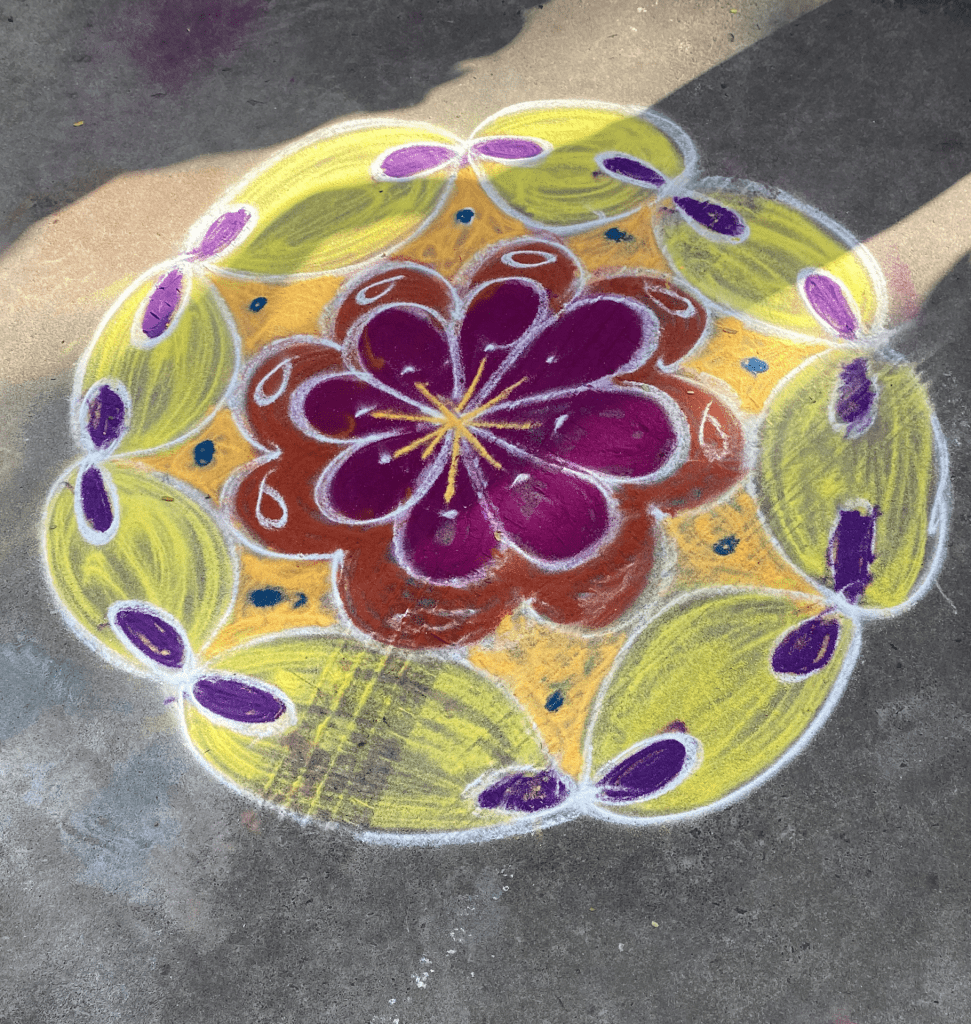
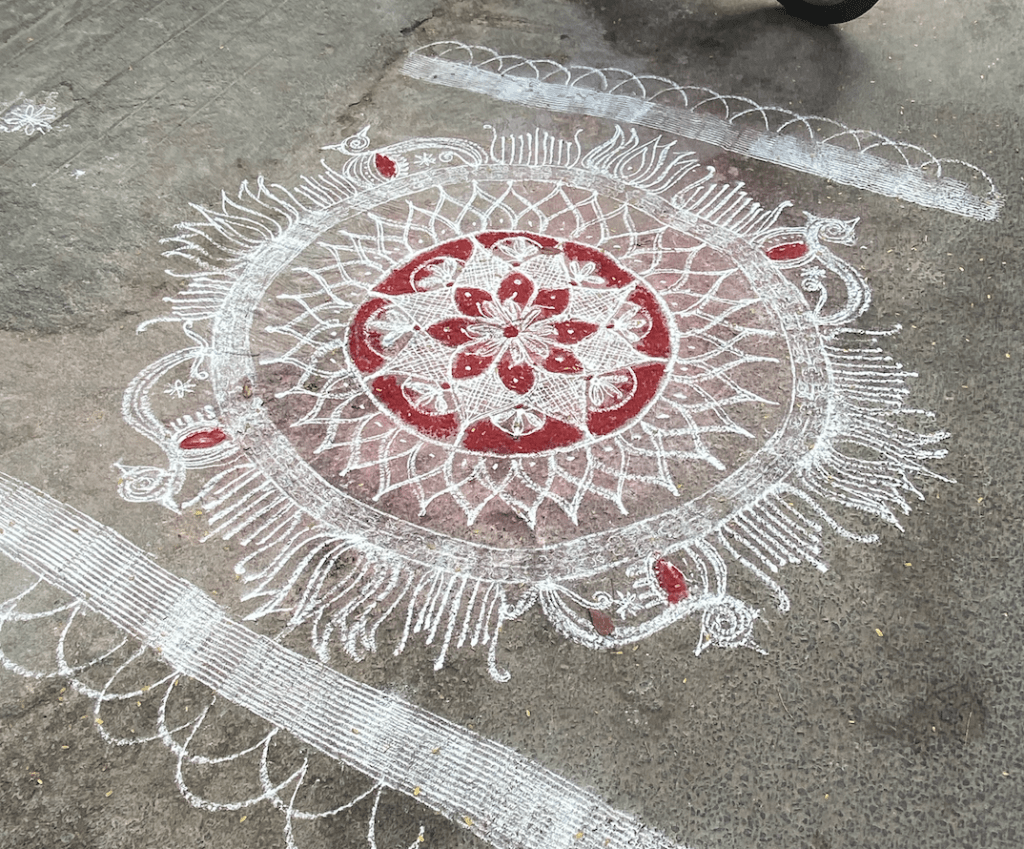
One thing that has suprised me about India is the amount of greenery we are constantly surrounded by. Balconies are draped with crawling vines and blooming flowers, and trees tower over the streets offering pedestrians shade. Trees in urban spaces are extremely beneficial and can help reduce the urban heat island effect as they can reduce temperatures of streets by 2-8 degrees celcius! The flora and fauna is a constant reminder of India’s tropical climate, but demonstrates the benefits of green spaces and features in our cities.
The city’s architecture is also a reminder of the French colonial history. The brightly coloured buildings matched the rich colours of the saris adorned by the women. The remnants of a colonial presence are seen through the arched windows and columns.
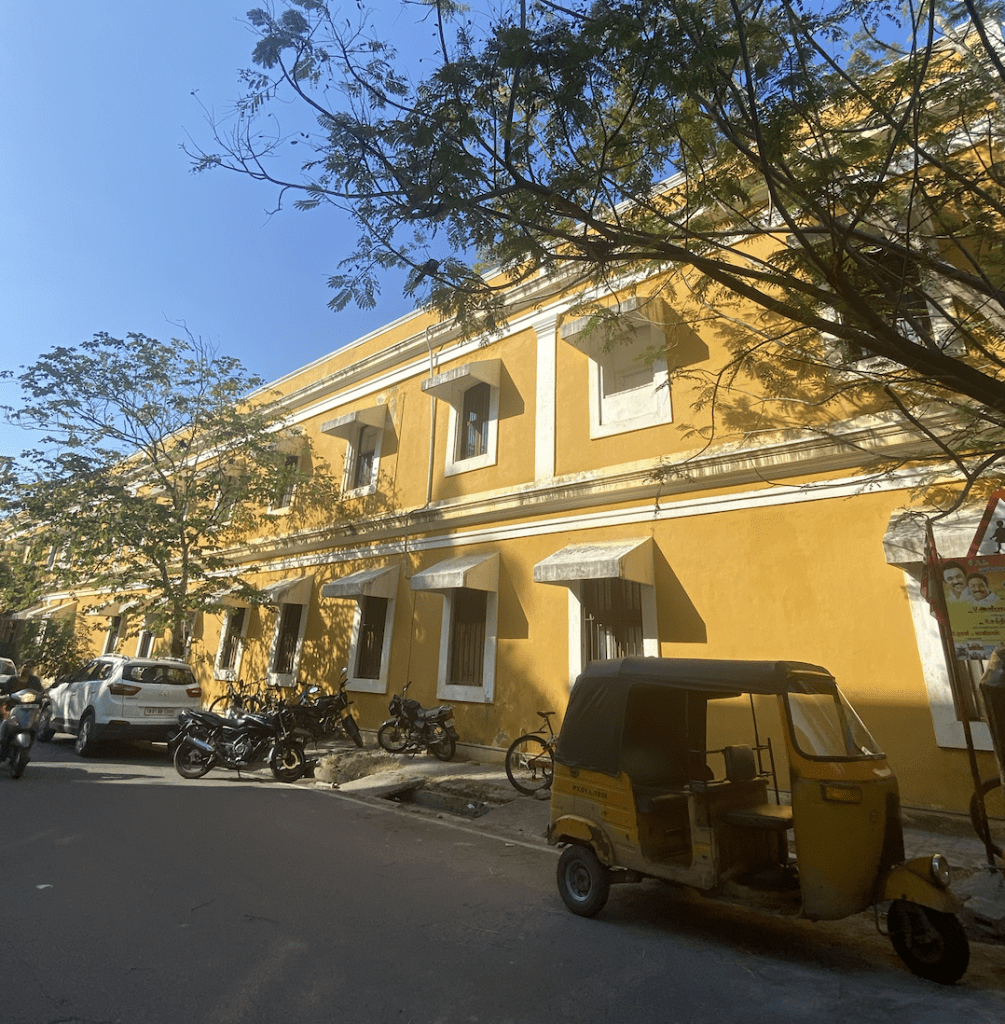
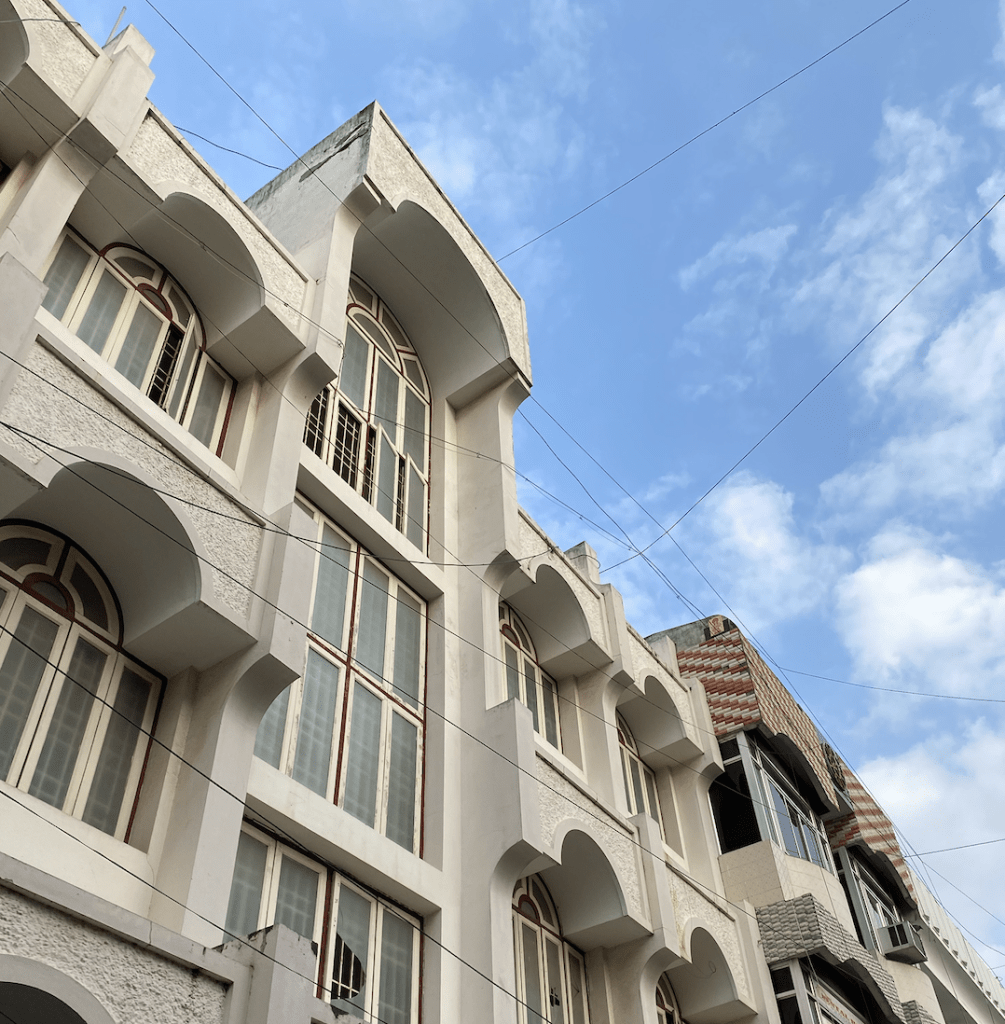
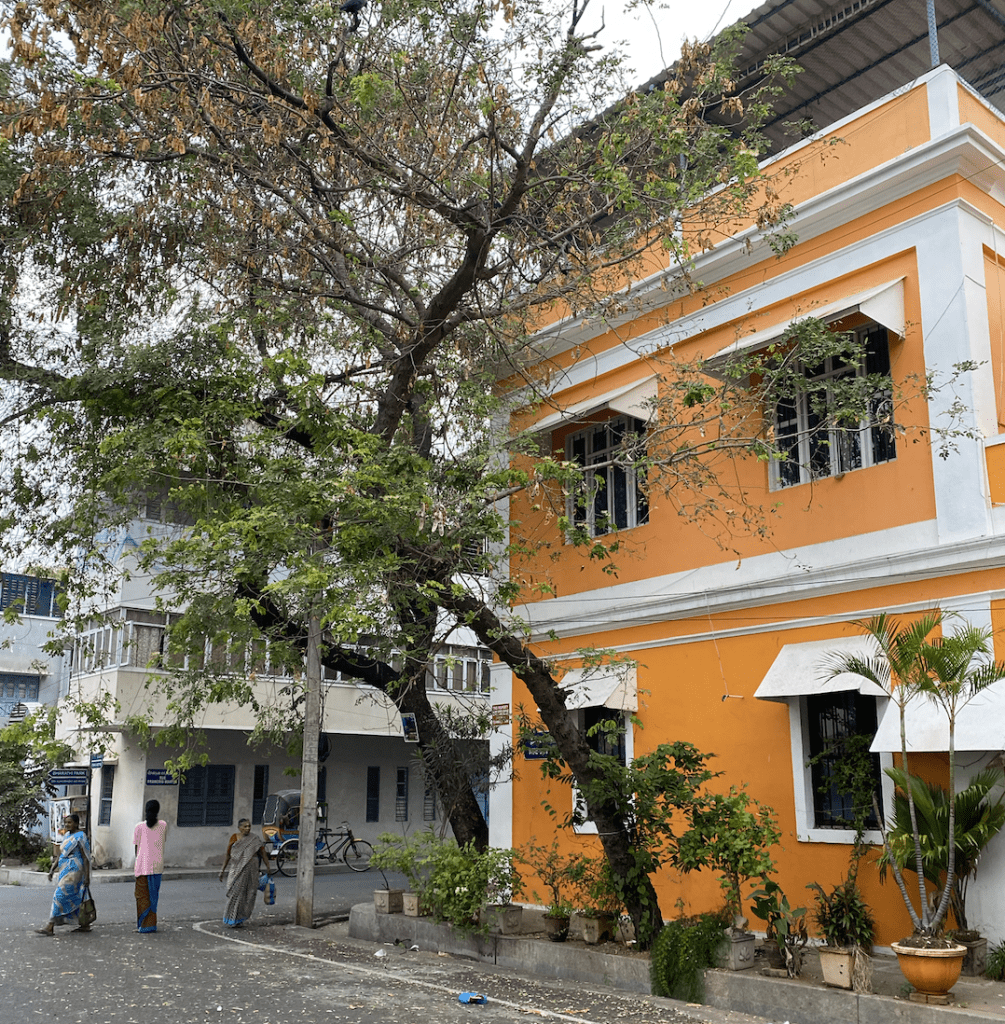
Vibrant gopurams (temple entrances) also lined the streets with their ornate entrances depicting various gods. In particular, the colour gold remains prominent from our visit to Manakula Vinayagar temple. An 18m kodi kambam laminated in gold greeted us as we approached the entrance, and a colourful, . We arrived inside just in time to see a golden chariot, which is an idol depicting deity, being carried around temple, the chariot is the temple’s idol. With the sound of drums and shehnai filling our ears, we took in the rich sights of the walls covered with vibrant paintings depicting Hindu mythology and traditions. Unfortunately pictures were not allowed inside the temple, but the vibrancy of the space can be seen in the below photos.
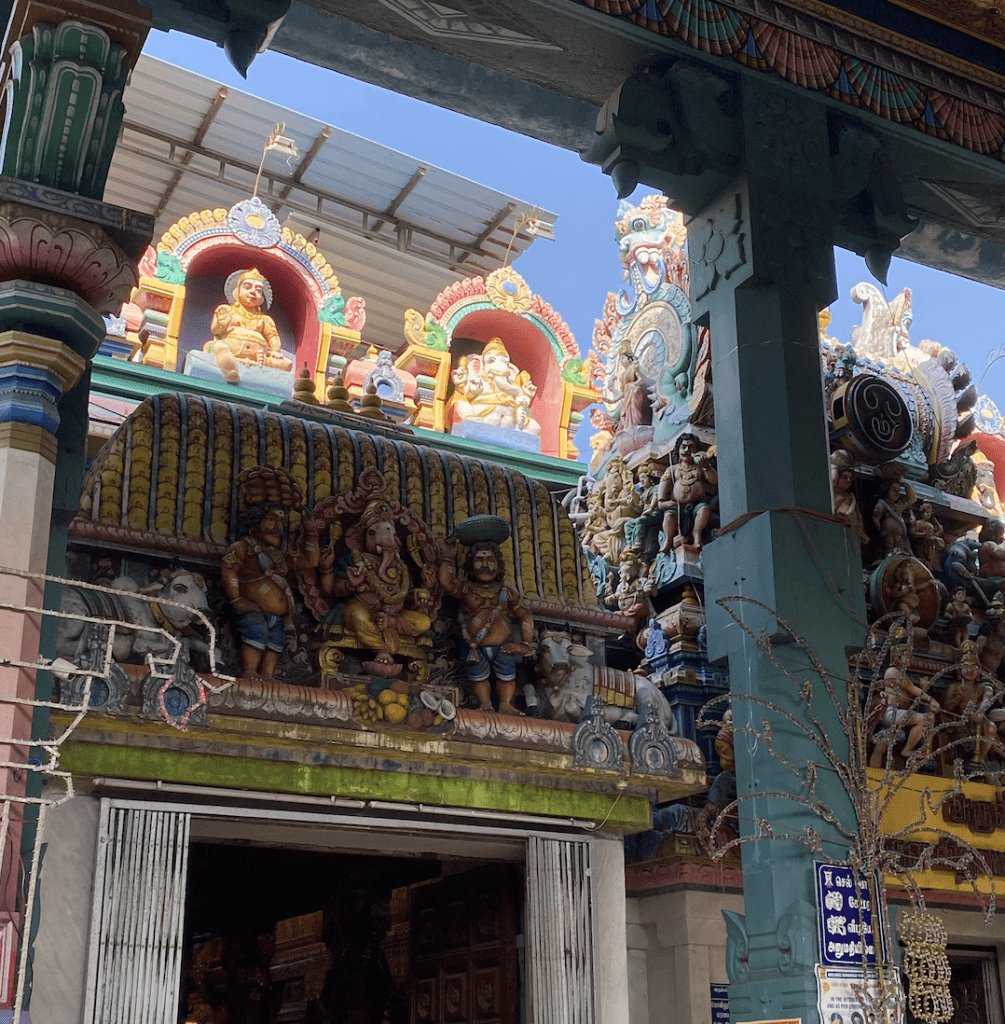

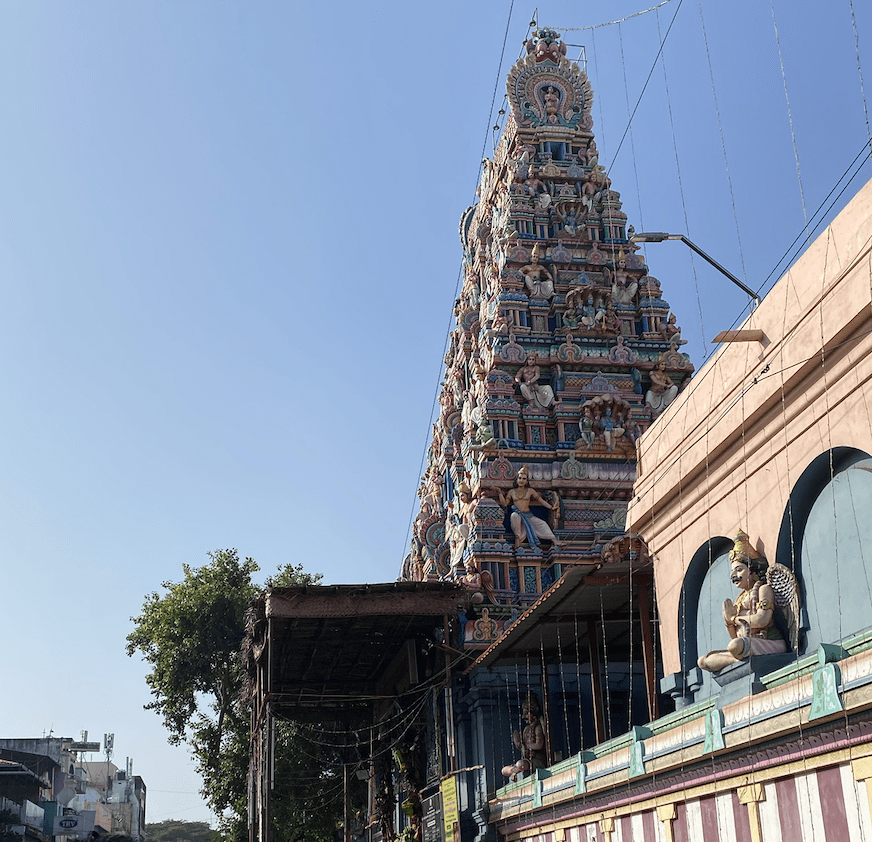
During our time in Tamil Nadu, we also visited Auroville and the Matrimandir (Temple of the Mother). The building took 37 years to build with symbolic design features, including the four pillars which represent the four aspects of the Mother as described by Sri Aurobindo. While the exterior of the Matrimandir was a shell of gold, the chambers within were pure white. Inside, the rooms were filled with silence, and we sat on the white marble floors, fascinated by the sunlight shining through the ceiling and being concentrated by the crystal in the centre of the room.
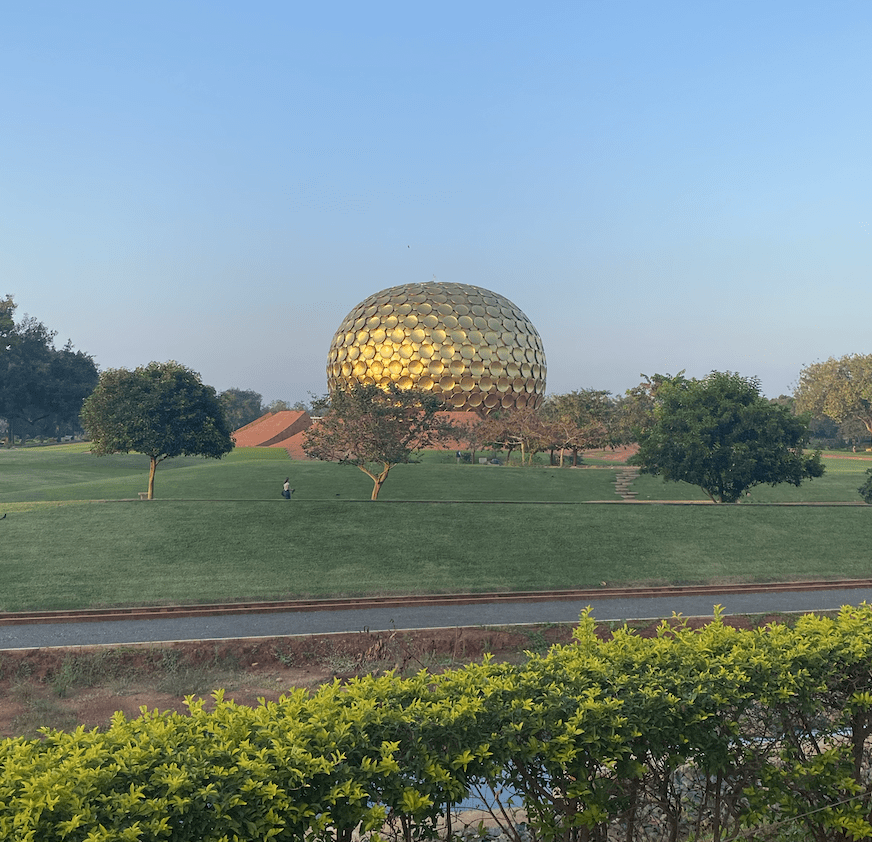
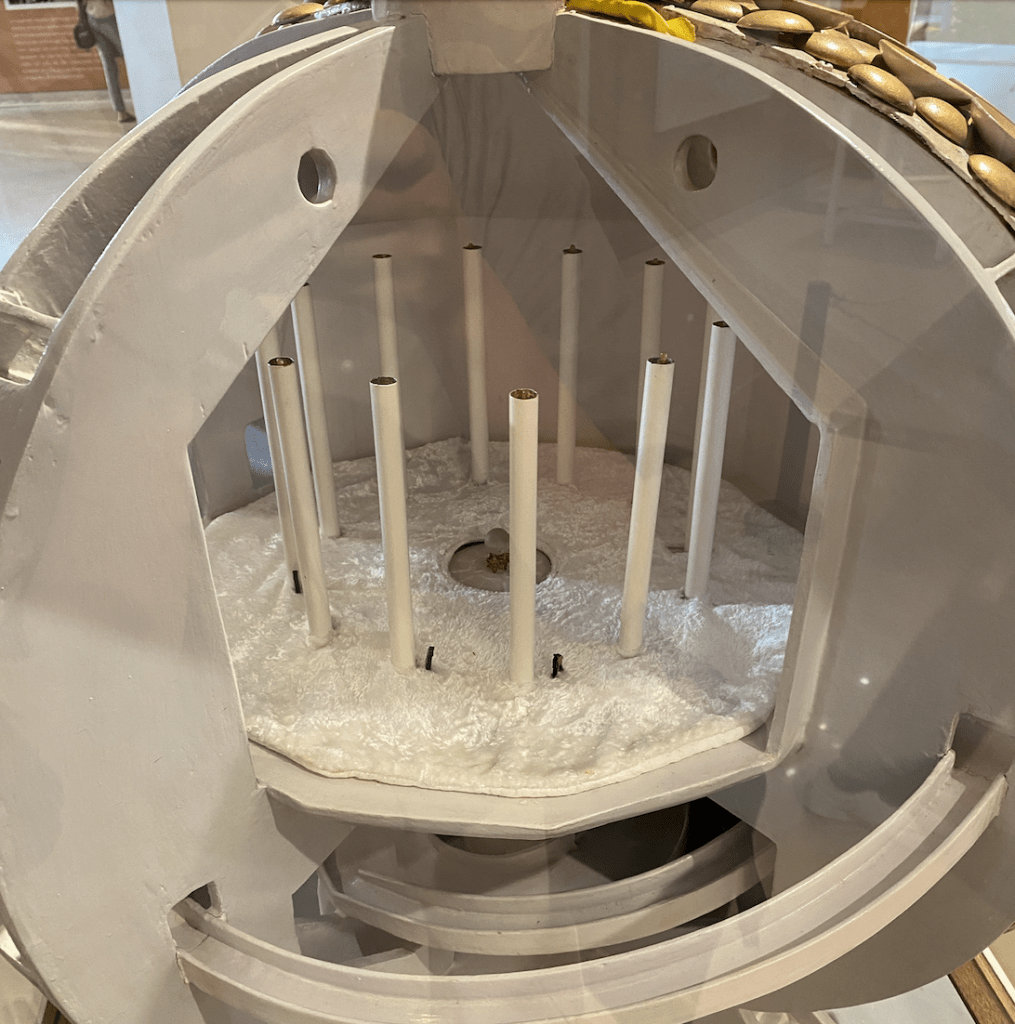
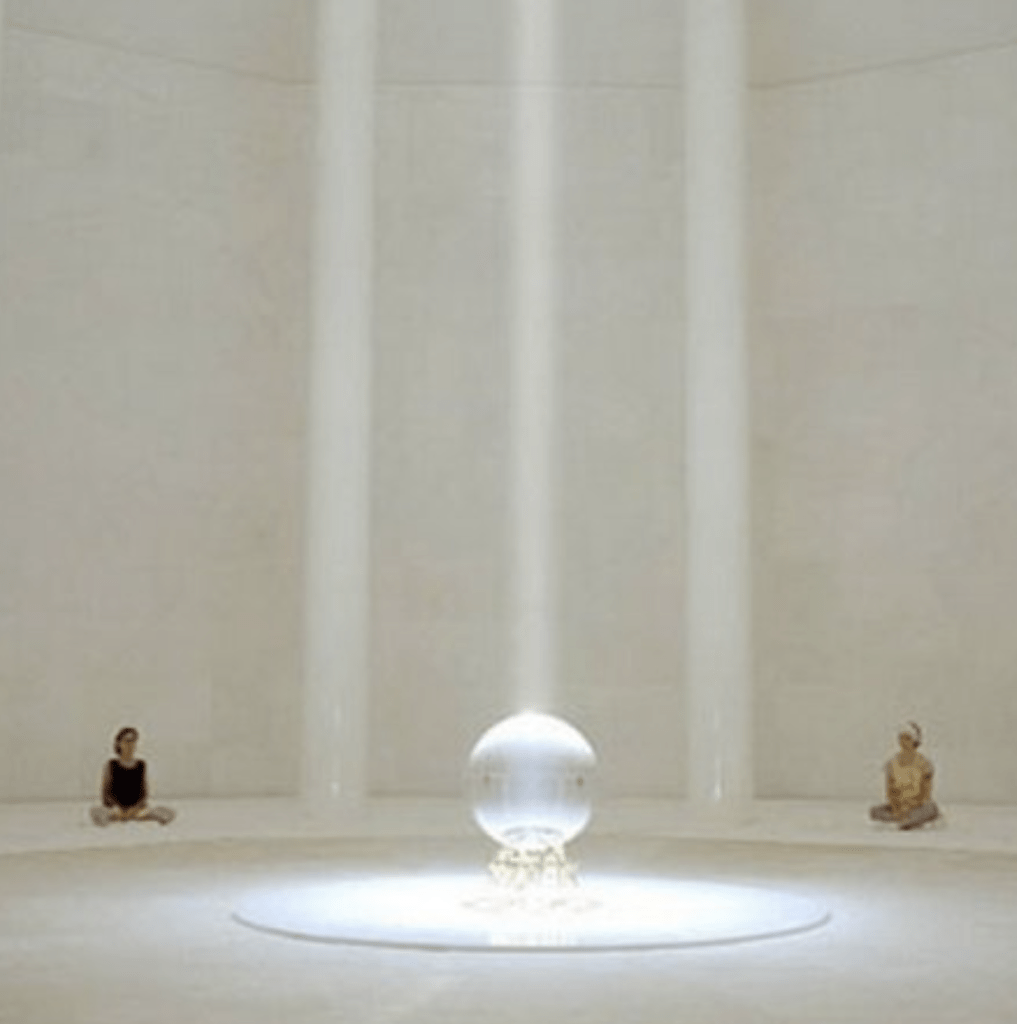
It’s only been one week of our six-week journey through India, but the experiences and memories I’ve gained are endless. I can’t imagine what we’ll see, hear, smell and feel over the next 5 weeks!
